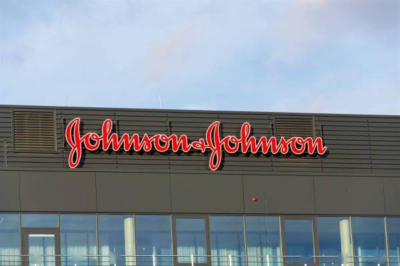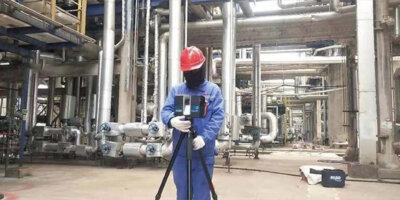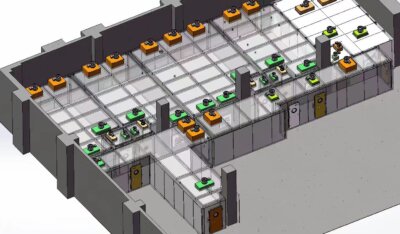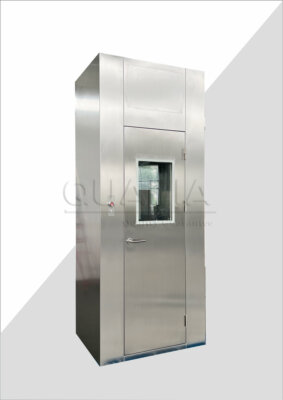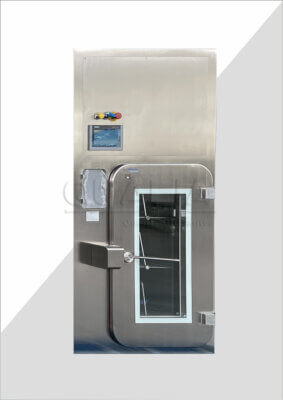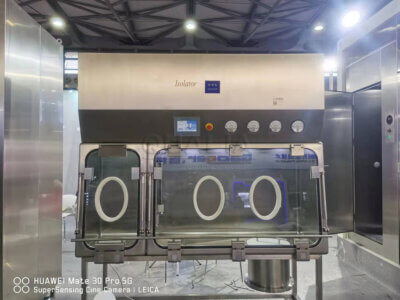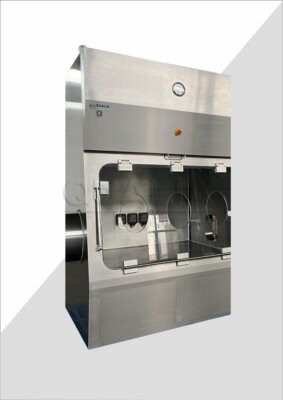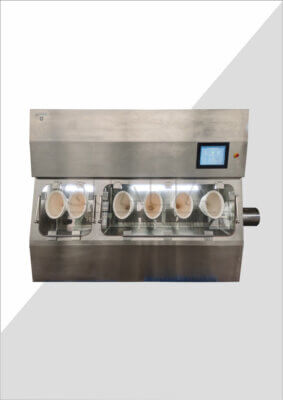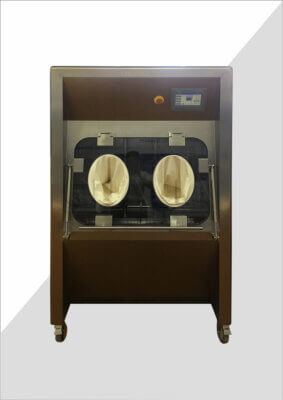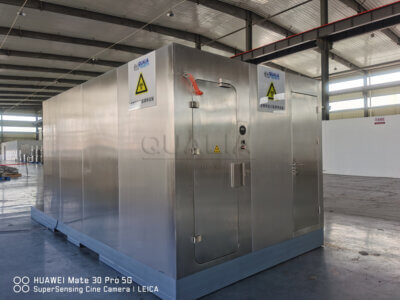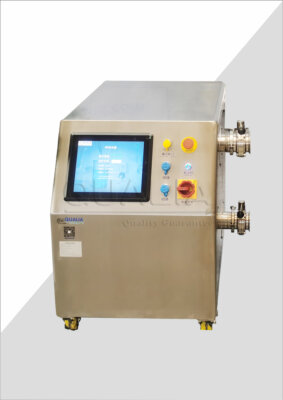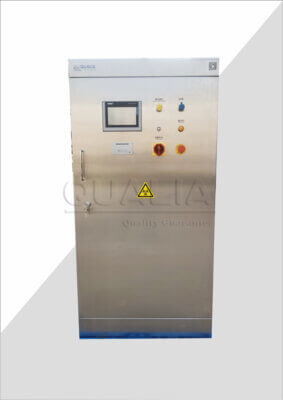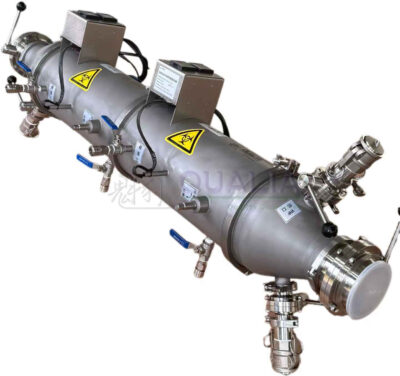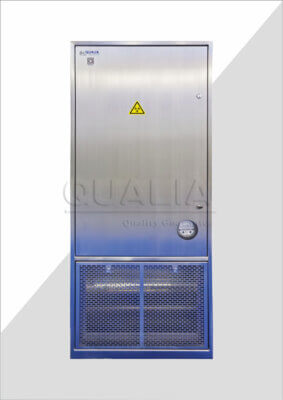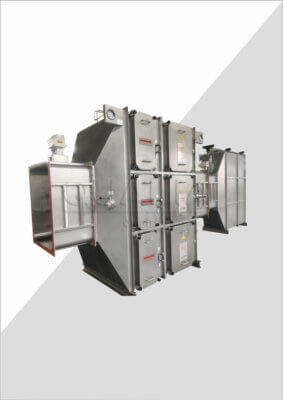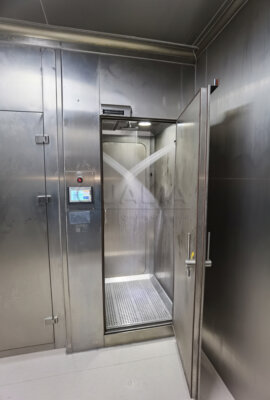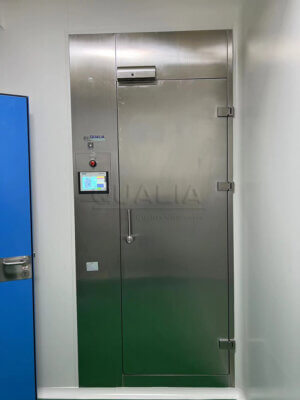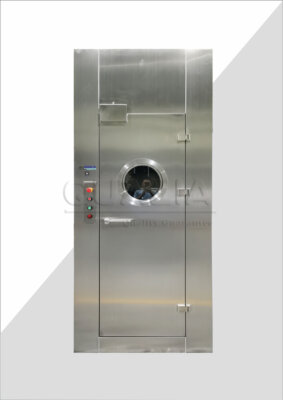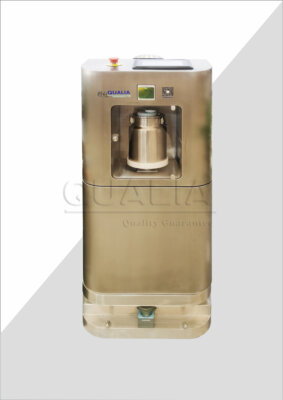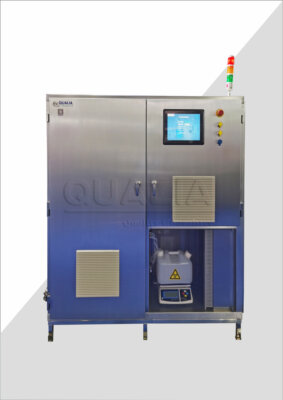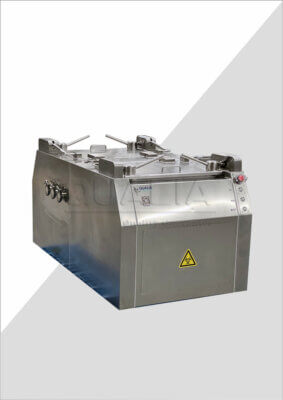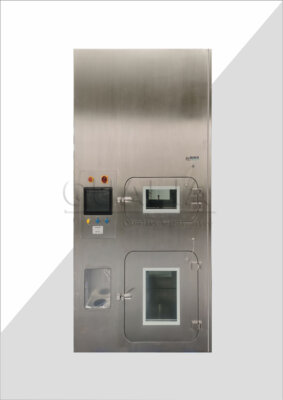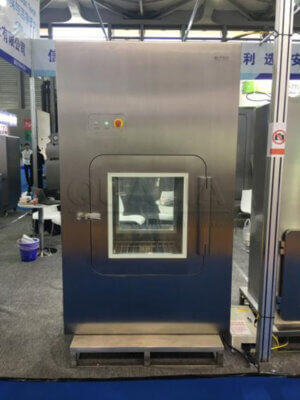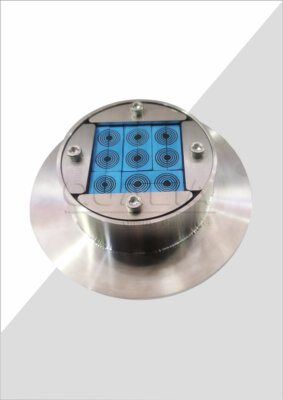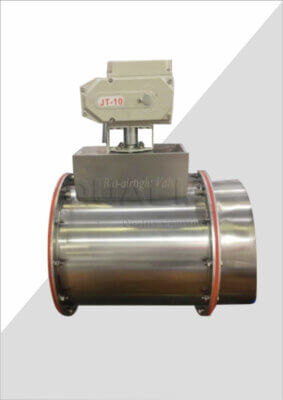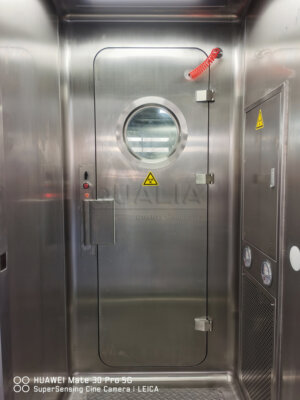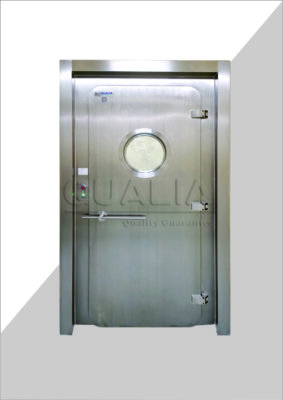Bag-in bag-out systems are crucial components in various industries where containment of hazardous materials is paramount. These systems allow for the safe removal and replacement of contaminated filters without exposing personnel or the environment to potential risks. Selecting the right bag-in bag-out system is a critical decision that can significantly impact operational efficiency, safety, and compliance.
In this comprehensive guide, we’ll explore the seven key technical requirements you need to consider when choosing a bag-in bag-out system. By understanding these factors, you’ll be better equipped to make an informed decision that meets your specific needs and ensures the highest standards of safety and performance.
According to a recent industry survey, 87% of facilities using bag-in bag-out systems reported improved safety outcomes and reduced incidents of contamination when proper selection criteria were applied.
When it comes to selecting a bag-in bag-out system, there are several crucial factors to consider. These include containment efficiency, material compatibility, airflow and pressure control, filtration effectiveness, ergonomics and user safety, durability and longevity, and compliance with industry standards. Each of these requirements plays a vital role in the overall performance and reliability of the system.
Let’s delve into each of these technical requirements in detail to help you make the best choice for your facility’s needs.
Containment Efficiency
The primary purpose of a bag-in bag-out system is to provide a high level of containment during filter changes. Containment efficiency is a measure of how effectively the system prevents the escape of hazardous particles or materials during the bag-out process.
When evaluating containment efficiency, consider the following key points:
- The system should maintain a negative pressure environment during filter changes to prevent outward leakage.
- Sealing mechanisms, such as gaskets and clamping systems, must be robust and reliable.
- The bagging material should be of appropriate strength and impermeability to contain contaminants.
Studies have shown that high-efficiency bag-in bag-out systems can achieve containment levels of up to 99.99%, significantly reducing the risk of exposure to hazardous materials.
To better understand containment efficiency ratings, refer to the following table:
| Containment Efficiency Rating | Description |
|---|---|
| Class 1 | Basic containment for non-hazardous materials |
| Class 2 | Intermediate containment for moderately hazardous materials |
| Class 3 | High containment for hazardous materials |
| Class 4 | Ultra-high containment for extremely hazardous materials |
When selecting a bag-in bag-out system, choose a containment efficiency rating that aligns with the level of risk associated with the materials you’re handling. QUALIA offers systems with various containment efficiency ratings to suit different industry needs.
Material Compatibility
The materials used in constructing a bag-in bag-out system must be compatible with the substances they will come into contact with. This includes both the filter media and the housing materials.
Consider the following aspects of material compatibility:
- Chemical resistance to prevent degradation or corrosion
- Temperature tolerance for applications involving extreme heat or cold
- Resistance to biological contaminants in healthcare or pharmaceutical settings
Choosing the right materials ensures the longevity and effectiveness of your bag-in bag-out system. Here’s a table outlining common materials used in BIBO systems and their compatibility:
| Material | Chemical Resistance | Temperature Tolerance | Biological Resistance |
|---|---|---|---|
| Stainless Steel | Excellent | High | Good |
| Polypropylene | Good | Moderate | Excellent |
| PVC | Moderate | Low | Good |
| PTFE | Excellent | High | Excellent |
When selecting a bag-in bag-out system, consider the specific materials you’ll be handling and choose a system with appropriate material compatibility. For a comprehensive solution suitable for various applications, explore the options available in the market.
Airflow and Pressure Control
Proper airflow and pressure control are essential for maintaining the integrity of the containment system and ensuring efficient filtration. A well-designed bag-in bag-out system should:
- Maintain consistent airflow rates across the filter media
- Provide stable pressure differentials to prevent bypass or reverse flow
- Allow for adjustments to accommodate changes in filter loading or operational requirements
Research indicates that optimal airflow and pressure control can extend filter life by up to 30% while maintaining high filtration efficiency.
Consider the following table of typical airflow rates and pressure differentials for different applications:
| Application | Airflow Rate (CFM) | Pressure Differential (inches w.g.) |
|---|---|---|
| Laboratory | 500 – 2,000 | 1.0 – 2.0 |
| Pharmaceutical | 1,000 – 5,000 | 1.5 – 3.0 |
| Nuclear | 2,000 – 10,000 | 2.0 – 4.0 |
| Industrial | 5,000 – 50,000 | 2.5 – 5.0 |
When selecting a bag-in bag-out system, ensure that it can handle the required airflow rates and maintain appropriate pressure differentials for your specific application.
Filtration Effectiveness
The effectiveness of the filtration system is a critical factor in choosing a bag-in bag-out system. This requirement focuses on the system’s ability to remove contaminants from the air stream efficiently.
Key considerations for filtration effectiveness include:
- The type and grade of filter media used
- The overall design of the filter housing and airflow path
- The ability to accommodate multiple stages of filtration if required
Industry data shows that high-efficiency particulate air (HEPA) filters used in many bag-in bag-out systems can remove up to 99.97% of particles as small as 0.3 microns in diameter.
To understand filtration effectiveness, consider the following table of common filter ratings:
| Filter Rating | Minimum Efficiency | Particle Size Range |
|---|---|---|
| MERV 13-16 | 75% – 95% | 0.3 – 1.0 microns |
| HEPA (H13) | 99.95% | ≥0.3 microns |
| HEPA (H14) | 99.995% | ≥0.3 microns |
| ULPA | 99.9995% | ≥0.1 microns |
When choosing a bag-in bag-out system, select a filtration level that meets or exceeds the requirements for your specific application to ensure optimal air quality and safety.
Ergonomics and User Safety
The design of a bag-in bag-out system should prioritize user safety and ergonomics to minimize the risk of injury and ensure ease of operation during filter changes.
Consider the following ergonomic and safety features:
- Comfortable working heights and reach distances
- Clear visibility of the work area
- Smooth operation of bagging mechanisms
- Adequate space for maneuvering and handling filters
Ergonomically designed bag-in bag-out systems have been shown to reduce the risk of musculoskeletal injuries by up to 40% among maintenance personnel.
Here’s a table outlining important ergonomic design features:
| Feature | Benefit |
|---|---|
| Adjustable height | Accommodates different user heights |
| Large viewing windows | Improves visibility during filter changes |
| Lightweight bagging sleeves | Reduces physical strain on operators |
| Safety interlocks | Prevents accidental exposure during maintenance |
For a user-friendly and safe bag-in bag-out solution, consider systems that prioritize ergonomics and operator safety in their design.
Durability and Longevity
A bag-in bag-out system is a significant investment, and its durability and longevity are crucial factors to consider. A well-built system should withstand frequent use and harsh environmental conditions without compromising performance.
Key aspects of durability and longevity include:
- Quality of materials and construction
- Resistance to wear and tear
- Ease of maintenance and parts replacement
- Overall design robustness
Studies have shown that high-quality bag-in bag-out systems can have an operational lifespan of 15-20 years when properly maintained, providing excellent return on investment.
Consider the following table of durability testing results for various system components:
| Component | Test Method | Expected Lifespan |
|---|---|---|
| Housing | Corrosion resistance | 20+ years |
| Seals and gaskets | Compression set | 5-7 years |
| Bagging material | Tensile strength | 2-3 years |
| Clamping mechanism | Cycle testing | 10+ years |
When selecting a bag-in bag-out system, prioritize durability and longevity to ensure long-term reliability and cost-effectiveness.
Compliance with Industry Standards
Ensuring that your bag-in bag-out system complies with relevant industry standards and regulations is crucial for legal and operational reasons. Compliance demonstrates that the system meets recognized safety and performance criteria.
Key standards and regulations to consider include:
- ASME N509/N510 for nuclear applications
- EN 1822 for HEPA filter classification
- ISO 14644 for cleanroom and controlled environments
- OSHA regulations for workplace safety
Facilities using bag-in bag-out systems that comply with industry standards report 25% fewer regulatory citations and improved audit outcomes.
Here’s a table of relevant industry standards and their applications:
| Standard | Application Area | Key Requirements |
|---|---|---|
| ASME N509/N510 | Nuclear | Leak testing, filter efficiency |
| EN 1822 | HEPA filtration | Filter classification, performance |
| ISO 14644 | Cleanrooms | Airborne particulate cleanliness |
| OSHA 1910.1030 | Bloodborne pathogens | Contamination control |
When choosing a bag-in bag-out system, ensure that it meets or exceeds the standards relevant to your industry and application to maintain compliance and operational excellence.
In conclusion, selecting the right bag-in bag-out system requires careful consideration of seven key technical requirements: containment efficiency, material compatibility, airflow and pressure control, filtration effectiveness, ergonomics and user safety, durability and longevity, and compliance with industry standards. By evaluating each of these factors in the context of your specific needs, you can make an informed decision that ensures optimal performance, safety, and regulatory compliance.
Remember that while all these requirements are important, their relative priority may vary depending on your industry and application. Take the time to assess your unique needs and consult with experts in the field to find the bag-in bag-out system that best meets your requirements.
By investing in a high-quality bag-in bag-out system that addresses these technical requirements, you’ll be well-equipped to maintain a safe, efficient, and compliant working environment for years to come.
External Resources
- Bag-In/Bag-Out vs. Non-BIBO Systems – This resource compares BIBO systems with non-BIBO systems, highlighting the safety and reliability of BIBO in handling hazardous filters.
- Camfil FB-Series Fluid Seal Bag-in/Bag-out Filter Housing – Provides detailed installation and maintenance instructions for Camfil’s BIBO filter housings, emphasizing safety and containment.
- Bag-In/Bag-Out (BIBO) Systems: Operation and Maintenance Guide – Offers comprehensive insights into the features, benefits, and applications of BIBO systems in various industries.
- ILC Dover’s Bag In/Bag Out System – Describes ILC Dover’s BIBO system as a contained transfer design applicable to various isolators, highlighting its versatility and cost-effectiveness.
- Technical Safety Services – While not exclusively focused on BIBO systems, this site offers expertise in laboratory testing and certification, which can be relevant for facilities using BIBO systems.
- Camfil’s Containment Solutions – Discusses Camfil’s solutions for handling hazardous materials, which include BIBO systems, emphasizing safety and environmental protection.
- HEPA Seal BIBO Housings – Provides information on HEPA seal BIBO filter systems, focusing on their role in maintaining contamination-free environments in industries like pharmaceuticals and biotechnology.
- Contained Transfer Systems – Offers a broader view of contained transfer systems, including BIBO, highlighting their application in handling sensitive materials.
Related Contents:
- Bag-In-Bag-Out Housing Applications in Pharmaceutical Manufacturing
- Bag-in Bag-out System Market Trends 2025 – Biosafety Integration Data
- Bag-In-Bag-Out Containment for Biopharmaceutical Processing – 27 CFR Compliance
- Bag-In-Bag-Out Containment Market Growth – 2025 Industry Analysis
- Bag-In-Bag-Out Containment Systems – 2025 Technical Specifications
- Bag-In-Bag-Out Housing Systems – ISO 14644 Compliant Filtration Specifications
- Bag-In-Bag-Out Containment Selection Guide – 7 Critical Parameters
- Bag-In-Bag-Out Containment Standards – ISO 14644 Implementation
- Bag-in Bag-out System vs. Conventional Filtration – 2025 Performance Analysis

